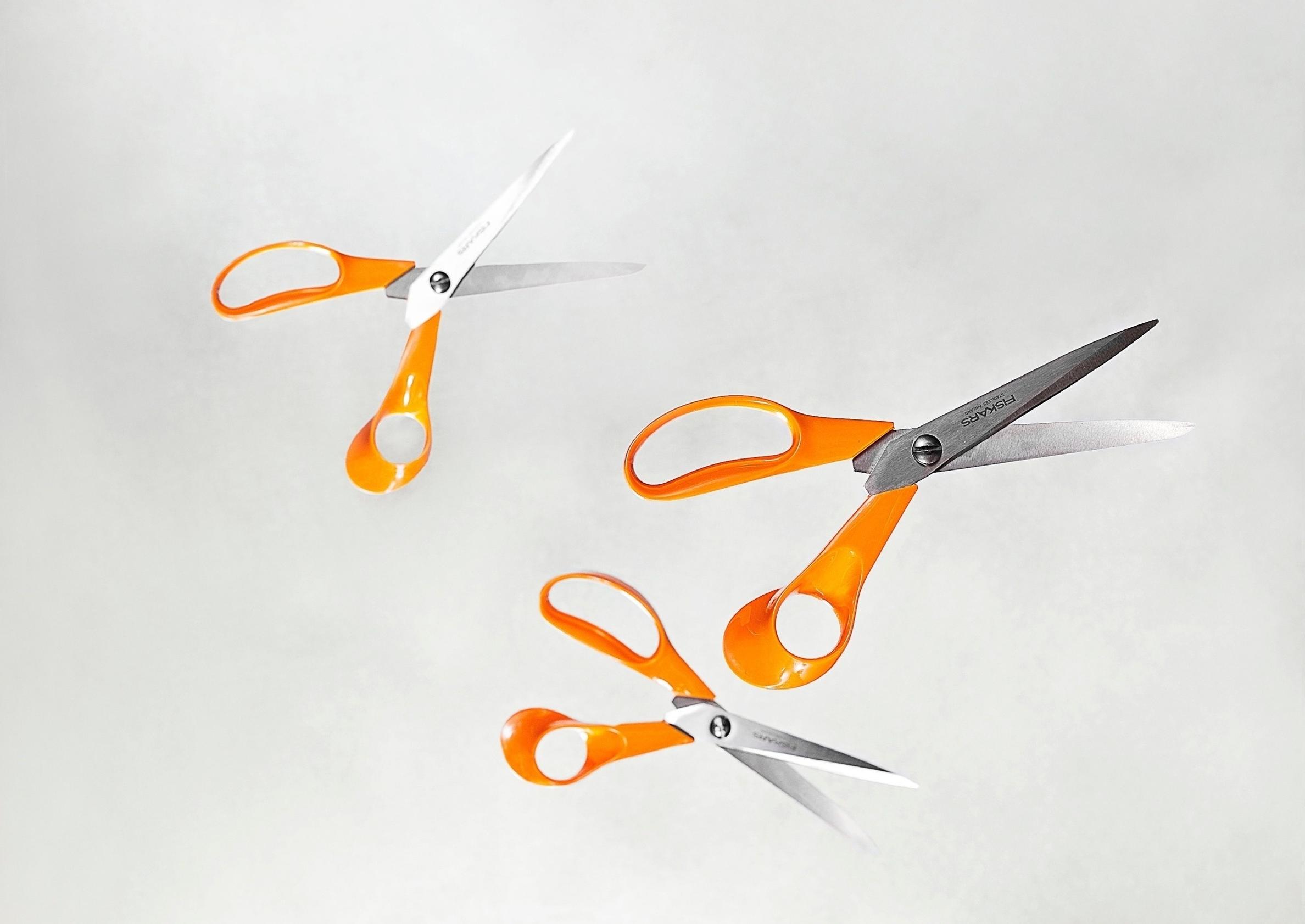
Fiskars scissors are a true design classic in Finland—but how did they get their iconic orange color?
Fiskars scissors have been around for more than 50 years. So far, more than a billion pairs have been sold worldwide. But how did we get here?
First, orange Fiskars scissors were a staple in Finnish homes for half a century—later, they went on to conquer the world. To date, more than one billion pairs have been sold.
Did you know this about the iconic product's past?
The orange color was an accident
Development of the scissors began in the early 1960s at the Billnäs factory. Their designer, industrial designer Olof Bäckström, wanted them to be black, red, or green.
However, when production started at the Billnäs factory in 1967, a machine operator decided to use up the remaining orange color in his machine. This led to four prototypes in different colors, and orange and black eventually edged out red and green. Fiskars employees then voted on the final color, and orange won.

Their predecessors were also high quality
Upon introduction, these scissors were the first in the world with plastic handles. Their predecessor, Fiskars tailor’s scissors, were already considered high quality in the late 1800s. Today, modern Fiskars scissors are held in high regard worldwide.
In the 1970s, the scissors took the United States by storm. Rumor has it that in many places, the word Fiskars practically became synonymous with scissors. It is also said that mothers would forbid other family members from using the scissors and hide them for their own sewing projects.
Thousands of scissors a day
Thousands of scissors are produced daily at the Billnäs factory. From time to time, imitations of popular items—including the orange scissors—appear on the market, but the company has comprehensive processes and systems to manage product counterfeiting.
Every pair of scissors is sound-tested
Before the scissors leave the factory, each pair is sound-tested. When used, the sound of an authentic pair will ring out from the beginning to the end of the cutting motion. Every pair made at the factory is also test-cut on fabric.
The color is protected from imitators
The thrifty machine operator’s decision to use up the leftover orange material in his machine proved surprisingly significant. Today, the orange color is protected as a trademark and has gradually become the company’s official color. The iconic shade of orange makes Finland’s oldest company stand out worldwide.
Sources: Fiskars website and communications manager Lotta Lappalainen


